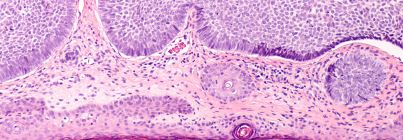Oma Agbai, M.D.

My top priority is delivering the highest level of medical care to my patients while providing a personal touch. I aim to provide holistic skin care, focusing on healthy skin and hair from the inside out.
Oma Agbai, M.D., Director of the service for Multicultural Dermatology and Hair Disorders, is a Board-Certified Dermatologist located in Sacramento, California. She has special interests in pigmentary disorders, disorders of the hair, and conditions unique to ethnic skin. Additionally, Dr. Agbai offers medical dermatology care and cosmetic procedures to patients of all skin types. Examples of conditions treated by Dr. Agbai include acne-induced skin discoloration, melasma and hair thinning.
Dr. Agbai’s clinical interests are rooted in her experience in clinical research in pigmentary disorders and multicultural dermatology. She is a co-author on multiple scientific publications and book chapters related to these topics. Additionally, Dr. Agbai has presented at national scientific meetings relating to her clinical and research interests. Examples on topics covered in scientific publications and presentations include novel systemic therapies for vitiligo, botanical agents for treatment of hyperpigmentation, and photoprotection recommendations for patients of color. Dr. Agbai also appears regularly as a contributor on the television program “Good Day Sacramento” on the topics of skin and hair.
Title:
Health Sciences Clinical Professor
Director, Multicultural Dermatology and Hair Disorders
Undergraduate Education: Emory University
Medical Education: Temple University School of Medicine
Internship: University of Pennsylvania Health System, Internal Medicine
Fellowship: Henry Ford Hospital, C.S. Livingood Clinical Research Fellow
Residency: University of California, Davis Medical Center, Dermatology
Selected Recent Peer-reviewed Publications:
Isedeh P, Kohli I, Al-Jamal M, Agbai ON, Chaffins M, Devpura S, Mahan M, Vanderover G, Lim HW, Matsui MS, Hamzavi IH. An in vivo model for postinflammatory hyperpigmentation: an analysis of histological, spectroscopic, colorimetric and clinical traits. Br J Dermatol. 2015 Dec 13. doi: 10.1111/bjd.14184. [Epub ahead of print].
Ornelas J, Agbai ON, Kiuru M, Sivamani RK. Alopecia as the Presenting Symptom of Syphilis. Dermatol Online J. 2015 Jul 15;21(7). pii: 13030/qt7q58360j.
Lim HW, Grimes PE, Agbai O, Hamzavi I, Henderson M, Haddican M, Linkner RV, Lebwohl M. Afamelanotide and Narrowband UV-B Phototherapy for the Treatment of Vitiligo: A Randomized Multicenter Trial. JAMA Dermatol. 2014 Sep 17. doi: 10.1001/jamadermatol.2014.1875. [Epub ahead of print].
Agbai ON, Buster K, Sanchez M, Hernandez C, Kundu RV, Chiu M, Roberts WE, Draelos ZD, Bhushan R, Taylor SC, Lim HW. Skin cancer and photoprotection in people of color: a review and recommendations for physicians and the public. J Am Acad Dermatol. 2014 Apr;70(4):748-62.
Fisk WA, Agbai O, Lev-Tov HA, Sivamani RK. The use of botanically derived agents for hyperpigmentation: a systematic review. J Am Acad Dermatol. 2014 Feb;70(2):352-65.
Shi YL, Weiland M, Li J, Hamzavi I, Henderson M, Huggins RH, Mahmoud BH, Agbai O, Mi X, Dong Z, Lim HW, Mi QS, Zhou L. MicroRNA expression profiling identifies potential serum biomarkers for non-segmental vitiligo. Pigment Cell Melanoma Res. 2013 May;26(3):418-21.
Pattamadilok B, Devpura S, Syed ZU, Agbai ON, Vemulapalli P, Henderson M, Rehse SJ, Mahmoud BH, Lim HW, Naik R, Hamzavi IH. Quantitative skin color measurements in acanthosis nigricans patients: colorimetry and diffuse reflectance spectroscopy. Photodermatol Photoimmunol Photomed. 2012 Aug;28(4):213-5.
Zhou L, Li K, Shi YL, Hamzavi I, Gao TW, Henderson M, Huggins RH, Agbai O, Mahmoud B, Mi X, Lim HW, Mi QS. Systemic analyses of immunophenotypes of peripheral T cells in non-segmental vitiligo: implication of defective natural killer T cells. Pigment Cell Melanoma Res. 2012 Sep;25(5):602-11.
Wilson JM, Ross WG, Agbai ON, Frazier R, Figler RA, Rieger J, Linden J, Ernst PB. The A2B adenosine receptor impairs the maturation and immunogenicity of dendritic cells. J Immunol. 2009 Apr 15;182(8):4616-23.


